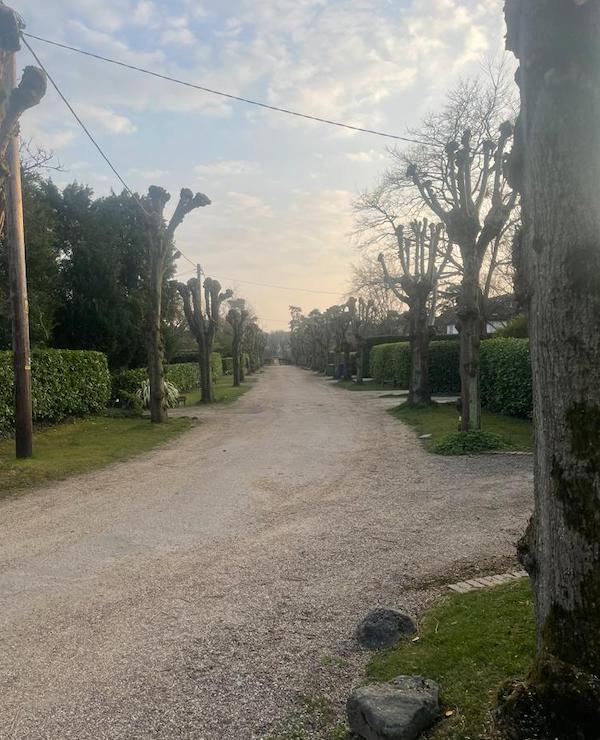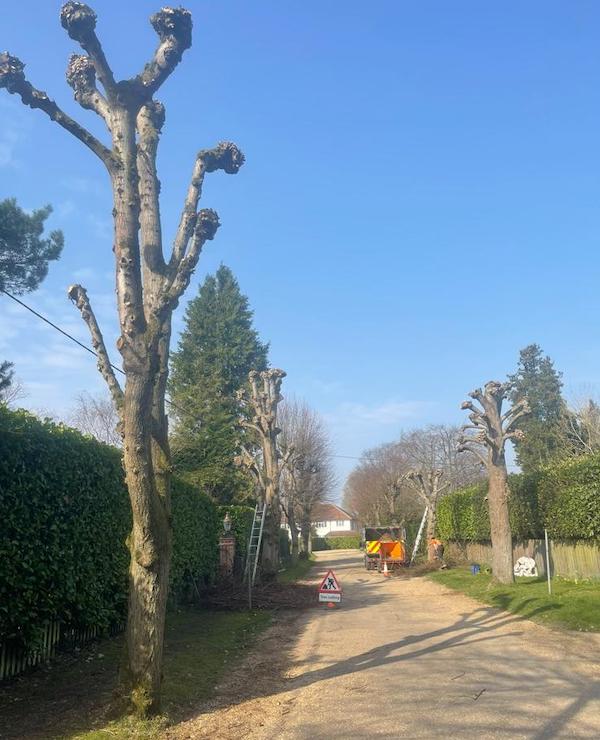These pollarded Lime trees in Amersham formed an avenue down a private road. In total there were 47 trees that needed to be re-pollarded.
Pollarding has become somewhat of a catch-all phrase used to describe the heavy topping of mature trees back to a single trunk, or a trunk with a small framework of branches. However, traditional pollards were started at a young age and pruned regularly, sometimes even yearly, in order to form the familiar ‘pollard knuckles’ that can be seen on these trees. The purpose of these traditional pollards serves to maintain trees in built-up environments, but it goes beyond that, with many considering it an art form in itself, much like topiary.
The pollarding process on these Lime trees had started earlier in their lives and as can be seen in the photos they have formed these pollard knuckles previously mentioned. Whilst pollarding an avenue of Lime trees such as these does reduce any danger associated with mature trees in frequently used areas, it does obviously come with the requirement for a regular maintenance regime.
The regrowth a tree forms after pruning is generally more weakly attached, especially in the case of species such as Lime, and Willow. Therefore the importance of regular inspection and maintenance of these trees becomes a responsibility that the tree owner needs to be aware of. We would typically recommend such trees are re-pollarded in cycles not exceeding 5 years.
The re-pollarding of these Lime trees was carried out over the course of several weeks. Due to the lack of urgency of the work, and an already full diary, the work was carried out over multiple days, often used as a fill-in when our teams had finished other local work ahead of schedule.

